How to turn on a Siemens dishwasher and start the wash
 Starting a dishwasher does not raise questions only for those users who have already dealt with this useful type of household appliance. For all those who have just purchased a brand new dishwasher, the question of how to turn on a Siemens dishwasher is more relevant than ever. Of course, the start itself is not something complicated - just insert the plug into the socket and press the “Start” button on the dashboard. Difficulties begin at the moment when you need to prepare the machine for work, load detergents, add dishes, and also select a washing mode. We will analyze all these points in detail so that beginners do not have any questions.
Starting a dishwasher does not raise questions only for those users who have already dealt with this useful type of household appliance. For all those who have just purchased a brand new dishwasher, the question of how to turn on a Siemens dishwasher is more relevant than ever. Of course, the start itself is not something complicated - just insert the plug into the socket and press the “Start” button on the dashboard. Difficulties begin at the moment when you need to prepare the machine for work, load detergents, add dishes, and also select a washing mode. We will analyze all these points in detail so that beginners do not have any questions.
Dishwashing detergents
Immediately after purchasing the PMM, you should carefully read the user manual, where you can find answers to all your questions. The document describes in detail not only the connection of the “home assistant” and the initial setup, but even the subtleties of arranging dishes and operating tips. Therefore, the loss of instructions is an unpleasant event, but far from critical, because we will cover all these important details within the framework of this article.
The first cycle of the dishwasher should always be carried out without any dishes in the washing chamber. Such an idle start is necessary in order to clean the insides of the equipment from dirt and dust that could have entered the device during assembly at the factory and long-term storage in the warehouse. In addition, this is a chance to evaluate the performance of the device, as well as the correct connection to all communications.
Even though there are no dishes during the test wash, detergent must still be loaded into the device.
A dishwasher cannot function normally without a whole range of special household chemicals. Here is a list of products that need to be added before using the machine, and then carefully monitor so that they do not run out:
- Specialized salt;
- Detergent in powder, gel or tablet form;
- Rinse aid.
Accordingly, before starting the wash without dishes, you need to load salt granules into a special hopper, adjust the PMM hardness level, and also add detergent along with rinse aid. Let's start with the ion exchanger and salt.
- Find out the hardness level of your tap water. This can be done using test strips, or simply by looking at the information on the official website of the city water utility, which is required to post current data.
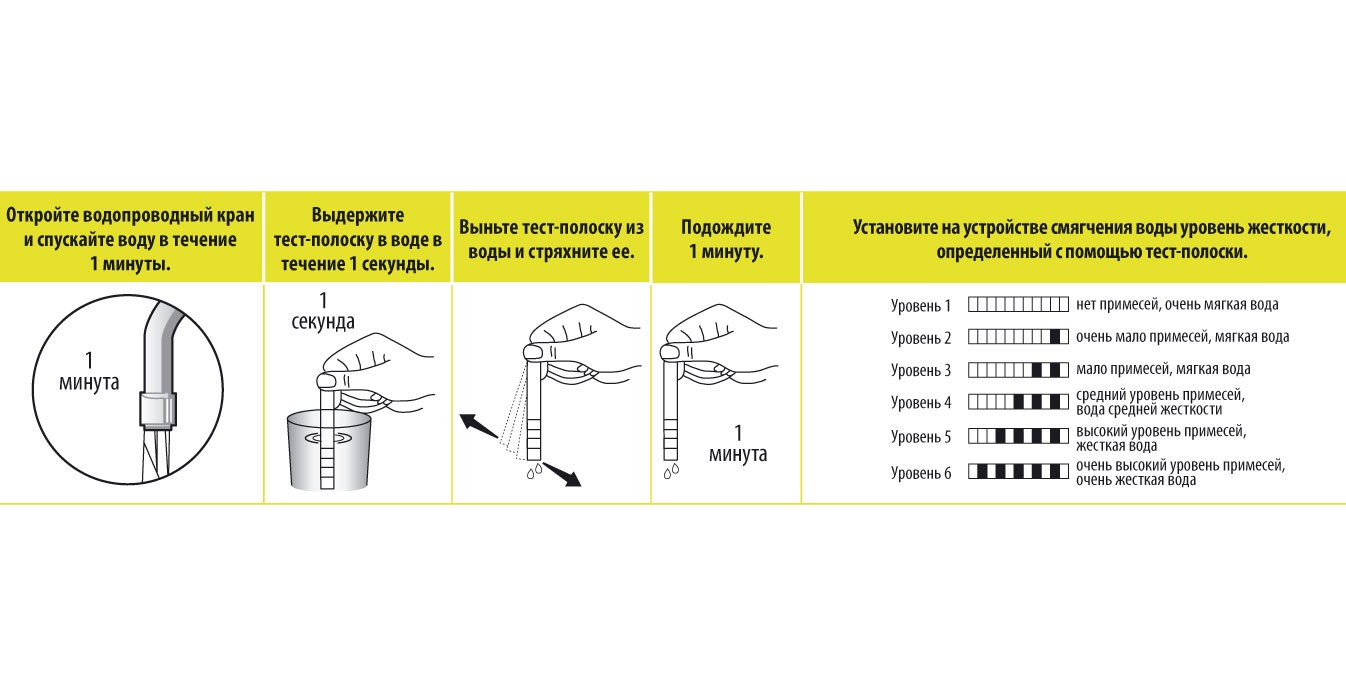
- Set the hardness level on the machine according to the tap water data. For example, if the test strip showed a hardness level of 2, then this level should also be set on the Siemens PMM.
If you are lucky and in your city the hardness of tap water is 1 or less, then you can not use salt at all.
- To load salt into a special reservoir, pull out the lower basket in the washing chamber, find the large salt bin lid there and unscrew it. Fill the compartment with about a liter of water, then add about a kilogram of salt, depending on the size of your salt tank, and then screw the lid on tightly.
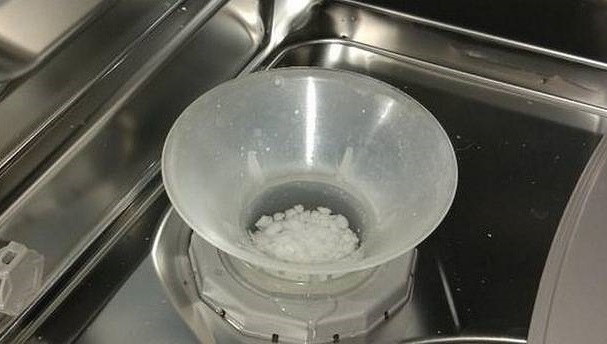
- Immediately after creating the saline solution, you should quickly run an idle cycle so that the salt water does not damage the internal components of the PMM.This is also true for situations where salt accidentally spills onto the bottom of the washing chamber.
If you don’t want to ruin your brand new household appliances, then do not use simple detergents for hand washing dishes, as well as ordinary table salt, since it is finer and dirtier than special salt, which means it will not be able to restore the functions of the ion exchanger as effectively.
Even if you sprinkled a little salt, still do not rush into a test run, since you first need to add detergents to the special compartments installed on the dishwasher door. On the door you will find two containers, one for the main wash, into which you can add 20 grams of product, and one for soaking, with a volume of approximately 5 grams. Be sure to close the compartment lid tightly after adding household chemicals.
This completes the preparation for the test wash. After completing the test, you need to additionally add rinse aid, which helps get rid of stains on the dishes and also speeds up the drying of the dishes. The reservoir for this product, holding about 110 milliliters, is located in the same place as the detergent compartments. Additionally, adjust the dispenser, focusing on the same hardness settings. If drops of water remain on the dishes after washing, try increasing the dose of rinse aid until the dishes are perfectly clean after the working cycle.
Place dishes in baskets
The second point in the mandatory preparatory program for turning on the PMM is loading dishes. From the outside it seems that there is nothing complicated about this - just arrange the cutlery in the baskets and close the washing chamber door.However, if you do not follow the basic rules for arranging dishes, then what you end up with is not crystal clean dishes, but a mountain of dirty plates, as if there was no sink at all. First of all, pay attention to the list of items that cannot be washed in this household appliance:
- Items with wooden, porcelain or mother-of-pearl inserts;
- Plastic elements without heat resistance;
- Tableware made of tin and copper;

- Fragile glasses and crystal products;
- Wooden utensils;
- Synthetic fiber products.
Before starting the wash, be sure to remove all large food debris, bones, napkins, tea bags and other debris from the dishes so as not to clog the PMM garbage filter.
We have become familiar with the main prohibitions, now it’s time to study the loading recommendations. It is very important to strictly follow all of the following rules:
- place all deep dishes upside down, and items with bends and recesses at an angle so that water does not accumulate inside, but drains during the washing process;
- each tableware must stand securely in its place so that the stream of water does not knock it over;
- dishes should not be piled up, none of the items should be stacked on top of each other, and no tableware should touch or in any way interfere with the movement of the sprinklers;
- a gap must be left between each element so that water can circulate freely, washing the dishes from all sides;

- small dishes should be placed in the upper basket, for example, mugs, glasses, plates, saucers, plus sharp and long cutlery, which must be laid horizontally;
- Large cutlery items such as pots, baking sheets, frying pans and lids are loaded into the lower basket;
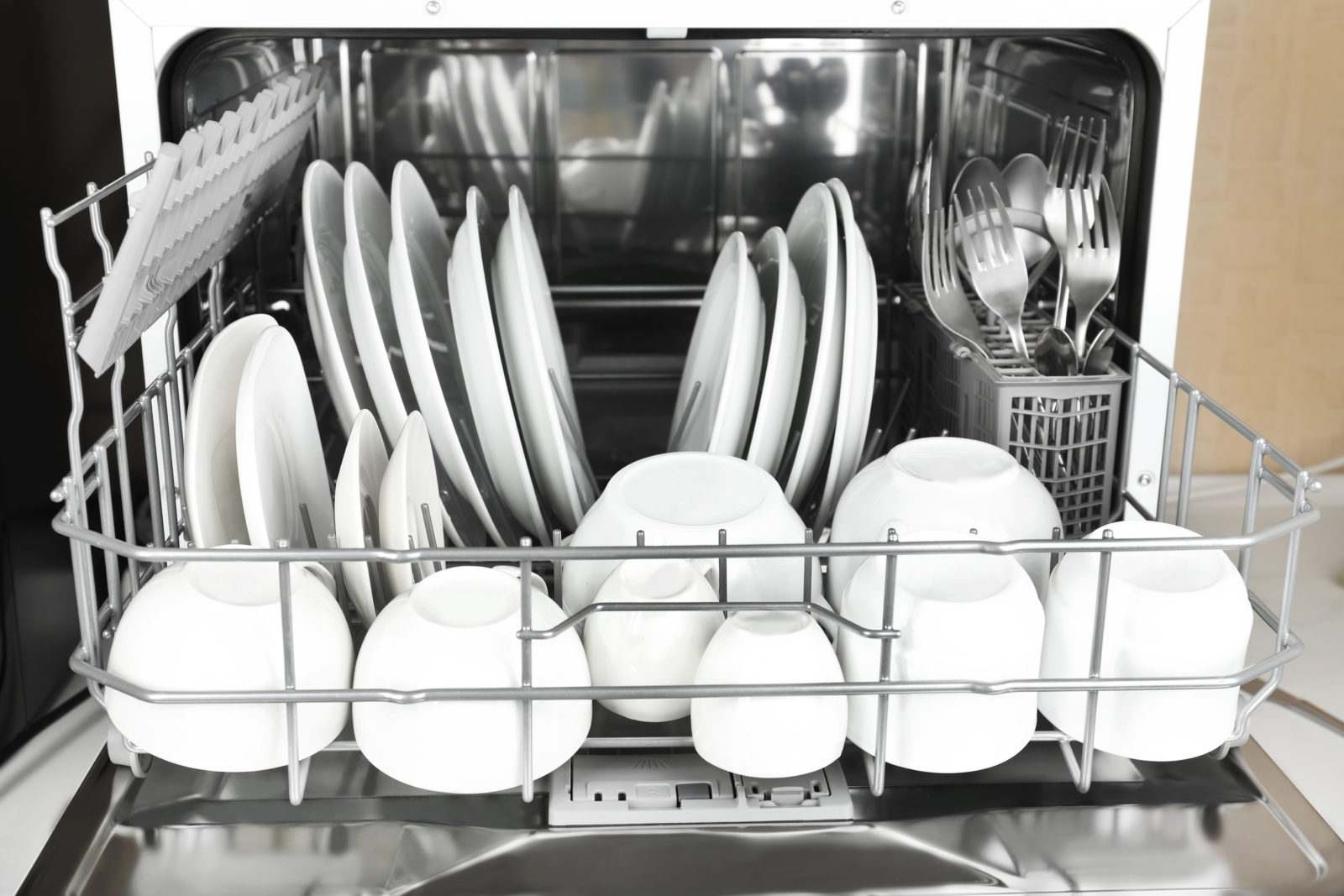
- Spatulas, skimmers, as well as forks and spoons are placed in a special tray for cutlery;
- place large items at the edges of the basket, and smaller items closer to the center;
- the plates should be installed with the inside facing the center of the basket;
- It is strictly forbidden to overload the equipment with a mountain of dishes, as this will not only affect the quality of washing, but will also increase energy consumption and the risk of breakdown. It is better to divide a large batch of dishes into several working cycles;
- Do not put very dirty and lightly soiled dishes into the dishwasher at the same time.
If there is not a lot of dishes accumulated, but they are all large and therefore do not fit into the washing chamber, then you can adjust the height of the upper basket and also remove the mounts for glasses to free up additional space for loading.
Over the decades, a lot of expert recommendations have accumulated regarding loading dishes, but they all really affect the quality of the wash, so you shouldn’t ignore them.
Turn on the equipment
Finally, we move on to the most interesting part - turning on the dishwasher for a full working cycle. If there is enough detergent and the dishes are already loaded, you can open the door of the device and press the power button. This activates the dashboard, on which you can select the required operating mode suitable for the specific dishes and degree of soiling. Today's dishwashers have a lot to choose from.
- Intensive mode, which is suitable for the dirtiest dishes. Such washing will be carried out at temperatures from 50 to 70 degrees Celsius for 165 minutes;
- Classic mode is suitable for moderately soiled tableware.The washing temperature is 45-65 degrees, duration is 175 minutes;
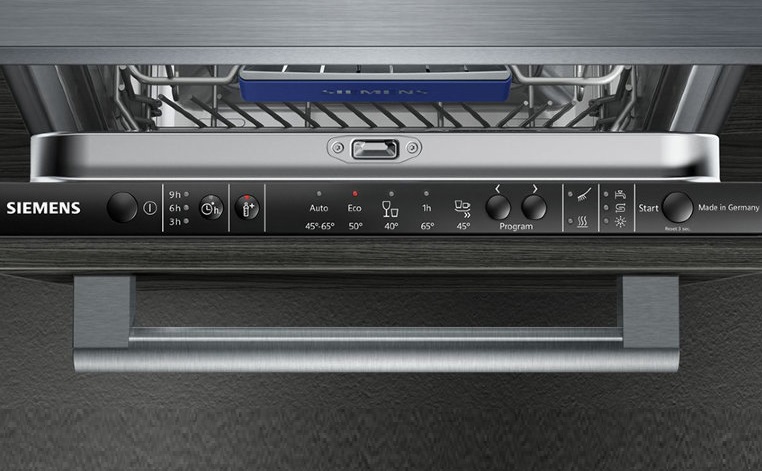
- Ecological is a choice for situations where the dishes are not very dirty, so you can save on electricity and water. In 190 minutes, moderately dirty dishes will be washed to a crystal shine using a minimum amount of resources;
- Glass is a special type for light stains, therefore the temperature and duration are minimal - only 40 degrees and 125 minutes;
- Accelerated mode for almost invisible stains to quickly clean all cutlery in just half an hour.
Choose only modes that are 100% suitable for dishes, because the same accelerated mode will not wash away burnt-on dirt, and intensive washing can damage fragile wine glasses and other delicate tableware.
The mode is selected using the corresponding key on the control panel. When you press a button, the corresponding indicator will light up. After this, you can close the door of the machine so that it starts working. If it turns out that you made a mistake with the mode and have already started the work cycle, but not much time has passed, then this can be corrected as follows.
- Open the dishwasher door.
- Press and hold the program button for 3-5 seconds so that the machine enters standby mode.
- Set the appropriate dishwashing type.
- Slam the washing chamber door.
In a similar way, you can add dishes to a machine that has already started working. You just need to open the PMM door slightly, wait until the water supply stops, open the door completely, add dirty dishes to the baskets and close the door tightly. After this, the Siemens dishwasher will continue the operating cycle.
Upon completion of work, the “home assistant” always plays a special sound signal notifying the user. Turn off the household appliances and open the washing chamber door to allow the dishes to dry and cool a little if you washed them in hot water. After just 10 minutes, all cutlery can be removed and the dishwasher can be left to dry with the door open. This completes the working cycle of the PMM.
Interesting:
Reader comments
- Share your opinion - leave a comment


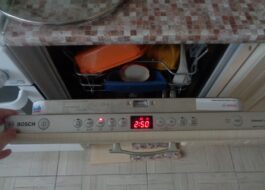
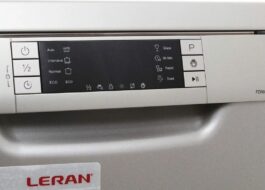

















Add a comment